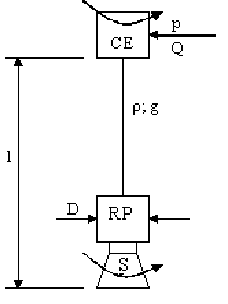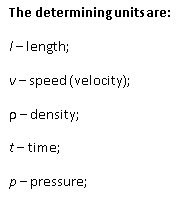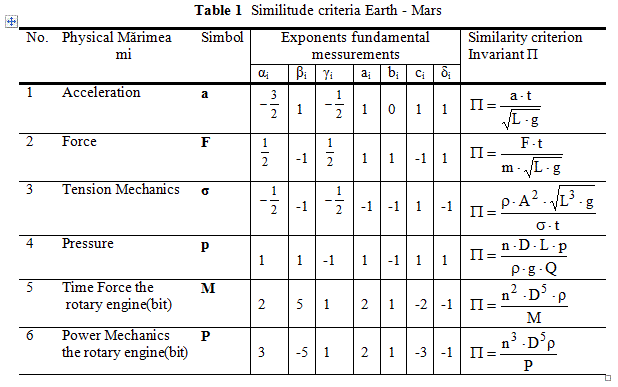1000/1000
Hot
Most Recent
Drilling derricks on Mars will not take place with the aim of exploiting carbon deposits whose investment is debatable but will have an exploratory character, that of discovering useful minerals and first of all, some water resources.
The water derricks will be of paramount importance in the prospects of future colonization of the planet and the project is included in the plan of interests of international spatial agencies, that conduct studies and researches on the atmosphere of the planet, from some of the accessed and notified data in various magazines resulting that the activity of exploring the martian soil will increase considerably in future time.
It is known that the method, which is already a classic one, used mainly in drilling terrestrial derricks is that of hydraulic circular drilling. The machine that undertakes the technological process of drilling contains three main systems of work( the hoisting system, the circling system and the circulation system). Setting these systems to work is electrical.
Generally speaking, when undertaking drilling on Mars there occur problems caused by the environment( gravitation, atmosphere), the energy sources and the drilling fluid’s composition. We turn the first problem, that of the energy source, to the specialists in the energy field to solve (for instance, the use of non-conventional sources of electrical energy that constitute the object of collateral interests and that we consider solved )
Our approach to problems regarding gravitation will involve the theory of similitude. The circulation of the drilling fluid will be replaced by that of the gas that composes the planet’s atmosphere: mainly carbon dioxide, similar to the case of drilling with air used in conditions that are specific to terrestrial drilling. The requirements of applying the method of circulation without liquid fluid will be analysed through similitude. The absence of oxygen in the atmosphere may be favourable ( there is no corrosion resulted from the presence of the oxygen, nor through water) in the case when the drilling installation is completely automatic( or robotic) The systems of manoeuvre and those of circling will be adequate to the requirements imposed by the automation /robotics of the installation and the logistics of the transport, and respectively to the activity of installing it. Hence, the premises of establishing a method of martian drilling will be analysed through similarity to the methods of terrestrial drilling.
Liquid water may still flow on Mars, but that doesn't mean it's easy to spot. The search for water on the Red Planet has taken more than 15 years to turn up definitive signs that liquid flows on the surface today. In the past, however, rivers and oceans may have covered the land. Where did all of the liquid water go? Why? How much of it remains?
Observations of the Red Planet indicate that rivers and oceans may have been prominent features in its early history. Billions of years ago, Mars was a warm and wet world that could have supported microbial life in some regions. But the planet is smaller than Earth, with less gravity and a thinner atmosphere. Over time, as liquid water evaporated, more and more of it escaped into space, allowing less to fall back to the surface of the planet.
The planet has a reddish surface because of the iron oxide. The planet radius represents half of that of Earth, and its mass is just a tenth of the Earth’s mass, it is less dense, but its surface area is not so different in comparison with that of the Earth. Mars and Earth are the same age, a.i. 4,6 milliard years.
At the surface of Mars, the atmospheric pressure is typically only about 0.10 pounds per square inch (0.7 kilopascals). This is roughly 0.7 per cent of the atmospheric pressure at Earth's surface. When the seasons change on Mars, the atmospheric pressure at the surface there varies by 20 to 30 per cent.
Each winter, the condensation of CO2 at the poles removes much gas from the atmosphere. When this happens, the atmospheric pressure due to CO2 gas decreases sharply. The opposite process occurs each summer. In addition, the atmospheric pressure varies as the weather changes during the day, much as on Earth.
The atmosphere of Mars is coldest at high altitudes, from about 40 to 78 miles (65 to 125 kilometres) above the surface. At those altitudes, typical temperatures are below -200 degrees F (-130 degrees C). The temperature increases toward the surface, where daytime temperatures of -20 to -40 degrees F (-30 to -40 degrees C) are typical. In the lowest few miles or kilometres of the atmosphere, the temperature varies widely during the day. It can reach -150 degrees F (-100 degrees C) late at night, even near the equator.
Mars has a mass (amount of matter) of 7.08 X 1020 tons (6.42 X 1020 metric tons). The latter number would be written out as 642 followed by 18 zeroes. Earth is about 10 times as massive as Mars. Mars's density (mass divided by volume) is about 3.933 grams per cubic centimetre. This is roughly 70 per cent of the density of Earth.
Because Mars is so much smaller and less dense than Earth, the force due to gravity at the Martian surface is only about 38 per cent of that on Earth. Thus, a person standing on Mars would feel as if his or her weight had decreased by 62 per cent. And if that person dropped a rock, the rock would fall to the surface more slowly than the same rock would fall to Earth.
Much of the crust is probably composed of a volcanic rock called basalt (but SAWLT). Basalt is also common in the crusts of Earth and the moon. Some Martian crustal rocks, particularly in the northern hemisphere, maybe a form of andesite. Andesite is also a volcanic rock found on Earth, but it contains more silica than basalt does. Silica is a compound of silicon and oxygen.
The mantle of Mars is probably similar in composition to Earth's mantle. Most of Earth's mantle rock is peridotite (PEHR uh DOH tyt), which is made up chiefly of silicon, oxygen, iron, and magnesium. The main source of heat inside Mars must be the same as that inside Earth: radioactive decay, the breakup of the nuclei of atoms of elements such as uranium, potassium, and thorium. Due to radioactive heating, the average temperature of the Martian mantle may be roughly 2700 degrees F (1500 degrees C).
Mars probably has a core composed of iron, nickel, and sulfur. The density of Mars gives some indication of the size of the core. Mars is much less dense than Earth. Therefore, the radius of Mars's core relative to the overall radius of Mars must be smaller than the radius of Earth's core relative to the overall radius of Earth. The radius of the Martian core is probably between 900 and 1,200 miles (1,500 and 2,000 kilometres). Unlike Earth's core, which is partially molten (melted), the core of Mars probably is solid. Scientists suspect that the core is solid because Mars does not have a significant magnetic field.
Some volcanoes have few craters, indicating that they erupted recently. The lava from the volcanoes would have covered any craters that existed at the time of the eruptions. And not enough time has passed since the eruptions for many new craters to form.
Some of the impact craters have unusual-looking deposits of ejecta, material is thrown out of the craters at impact. These deposits resemble mudflows that have solidified. This appearance suggests that the impacting bodies may have encountered water or ice beneath the ground.
Mars has a few large impact craters. The largest is Hellas Planitia in the southern hemisphere. Planitia is a Latin word that can mean low plain or basin; Hellas Planitia is also known as the Hellas impact basin. The crater has a diameter of about 1,400 miles (2,300 kilometres). The crater floor is about 5.5 miles (9 kilometres) lower than the surrounding plain.
When analyzing the engineering systems through similitude between Earth and Mars, the following are adopted:
For the two physical phenomena, having the same class, to be similar, it is necessary and sufficient that their adequate similitude criteria be equal, and the oneness conditions are proportional. For example, if the chosen measurements are unit 1 (m1), unit 2 (m2) and unit 3 (m3), by applying Theorem p, it results:
[L]0 [M]0 [T]0 = [m1]α [m2]β [m3]γ × { [L]a [M]b [T]c }d (1)
It will be described the phenomenon that accompanies the technology of dry rotor–percussion drilling with air circulation on Earth and martian air on Mars. This phenomenon implies reporting the movement of some masses and fluids towards an inertial reference point where the masses forces are reduced to gravitational accelerations. The machine that undertakes the technological process of drilling contains three main systems of work( the manoeuvre system, the circling system and the circulation system). Setting these systems to work is electrical. The drilling technology also requires, among others, the existence of the drilling tools and the drilling bit. The determining units are (see figure below):


The drilling technology also requires, structure description
It is known that the method, which is already a classic one, used mainly in drilling terrestrial derricks is that of hydraulic circular drilling. The machine that undertakes the technological process of drilling contains three main systems of work( the hoisting system, the circling system and the circulation system). Setting these systems to work is electrical. The drilling technology also requires, among others, the existence of the drilling tools and the drilling bit. The determining similitude criterion is (see table below).

Their evidence came from an outcropping of Martian bedrock found in the small crater in which Opportunity landed. The rover's analysis showed that the rock contained large amounts of sulfate salts, which contain sulfur and oxygen. On Earth, such high concentrations of sulfate salts occur only in rocks that formed in water or were exposed to water for long periods. The outcropping's surface also bore tiny pits similar to those found on Earth where salt crystals formed in wet rock and later dissolved or eroded.
In the video, the theoretical methods consisted of applying the fundamental laws of physics and mathematical devices to study the phenomenon. The experimental method is proposed to perform the actual physical phenomena will study their reproduction in the laboratory.
The stand relies on that simulates the real way of connecting with the foundation of the real structure. To obtain the model were verified some similarity criteria achieving an acceptable degree of geometric similarity, kinematic and dynamic with a real unconventional plant.
Surgery for manoeuvre is accompanied by the phenomenon of vibration and other disturbances due to multiple shocks from four feet (four tracks), which can cause a completely random variation of effort (it is the fact that during the lifting or lowering, due to errors assembly, geometric asymmetries, mechanical or hydraulic, structure deformation during the manoeuvre, the platform may not be in constant contact with the four rail tracks between them causing the failure, shock generators, for example, a sudden discharge of the burden passed to one way of running appears as a sudden charge of its counterparts in the plane in which movement occurred.
Drilling derricks and equipment on Mars will not take place with the aim of exploiting carbon deposits whose investment is debatable but will have an exploratory character, that of discovering useful minerals and first of all, some water resources or/and thermal water resources.
The water derricks will be of paramount importance in the prospects of future colonization of the planet and the project is included in the plan of interests of international spatial agencies, that conduct studies and researches on the atmosphere of the planet, from some of the accessed and notified data in various magazines resulting that the activity of exploring the martian soil will increase considerably in future time.
Our approach to problems regarding gravitation will involve the theory of similitude. The circulation of the drilling fluid will be replaced by that of the gas that composes the planet’s atmosphere: mainly carbon dioxide, similar to the case of drilling with air used in conditions that are specific to terrestrial drilling.
The requirements of applying the method of circulation without liquid fluid will be analysed through similitude. It is known that the method, which is already a classic one, used mainly in drilling terrestrial derricks is that of hydraulic circular drilling.
Furthermore, it is known that, presently, to produce better deposits of oil and terrestrial gas there are derricks to drill in all directions, including along the productive layers, derricks with many ramifications, derricks that use the effect of gravitational so on and so forth.